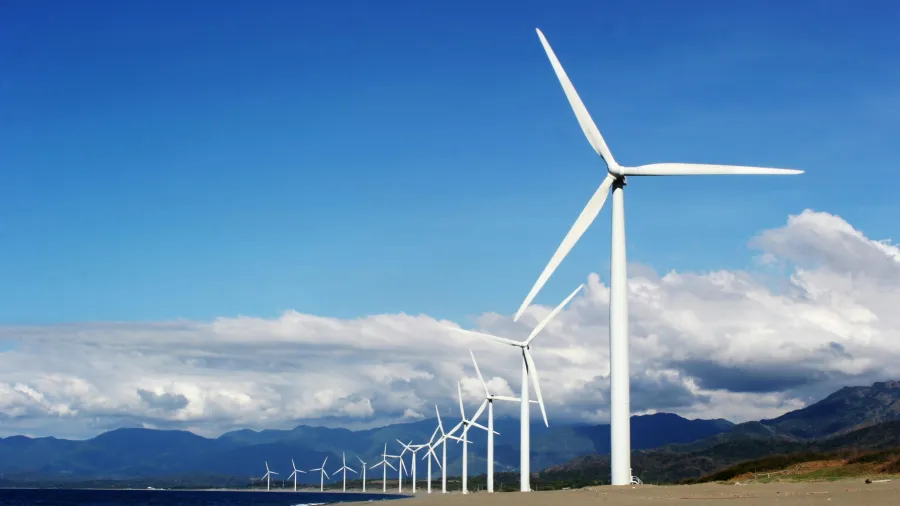
Bold action required to fully tap Japan’s RE growth potential
RE100 urges Japan to increase its green energy capacity to 363GW by 2035.
MIGHTY as it stands as a global economic leader, Japan faces a significant challenge in expanding its renewable energy (RE) capacity. In fact, the world’s fourth largest economy has renewable energy accounting for only 22% of its total electricity generation — the lowest amongst G7 countries.
This shortfall presents an urgent need for change, as articulated by RE100, a global initiative organised by The Climate Group and CDP (formerly the Carbon Disclosure Project). Comprising more than 400 influential corporates committed to 100% renewable electricity, RE100 urges Japan to increase its green energy capacity from 121 gigawatts (GW) in 2022 to 363GW by 2035.
“By increasing its domestic renewables capacity, Japan can significantly improve its energy security, safeguard its international competitiveness, and increase private investment in more renewables projects,” RE100 stated in its policy recommendations.
One way to address this is by taking advantage of growth opportunities in other RE sources.
Janna Smith, renewables researcher at Global Energy Monitor (GEM), told Asian Power that one of Japan’s priorities in its future renewable energy development plans is geothermal power.
“There’s a significant potential for geothermal development in the country, but the policies to implement these projects have to align, not only with developers and the timelines that geothermal takes to come online, but also local communities affected,” Smith said.
Another growth opportunity is wind energy, which is currently an underutilised sector in Japan, Smith said.
Ember Asia Programme Director Aditya Lolla echoed this sentiment, emphasising that to successfully deploy wind energy, institutional reforms are needed to simplify investment processes and facilitate deployment.
State of Japan’s renewables
Japan targets to increase the share of renewable energy mix of solar, wind, hydropower, geothermal, and biomass, from 26% in 2022 to 36%-38% by 2030. It also aims to increase the share of nuclear generation from 5% in 2022 to 20%-22% by 2030.
Citing data as of end-2023, Smith said Tokyo’s RE capacity was around 150 GW, led by solar with 92 GW, followed by hydropower with about 22 GW, and wind with about 4GW.
When compared with other countries, Smith said Japan lags behind its G7 peers in terms of operational wind capacity. The country is also in the middle of the pack amongst countries in the Asia Pacific (APAC) when it comes to prospective capacity for solar and wind power.
Japan is off track to triple its renewable capacity by 2035, with only 10 GW of utility-scale solar and wind projects expected online by then, she pointed out.
“Japan’s renewable energy policy has been criticised for being unambitious by domestic and international groups, claiming that Japan needs to do more to reduce the country’s dependence on fossil fuels that make up over 70% of the country’s energy capacity,” Smith said. “In addition, the stronghold that fossil fuels has in Japan contributes to the country importing over 85% of its energy from abroad.”
She suggested that Japan set “explicit goals for boosting renewable energy development” and provide concrete steps to reduce its dependence on fossil fuels.
Speaking to Asian Power, Lolla agreed that other countries have been more ambitious in their targets compared to Japan. This includes India that currently has similar levels of installed renewable capacity as Tokyo, but it has bolder renewables targets by 2030.
“India wants to build close to 420 gigawatts of renewables, mainly 300 gigawatts of solar, 100 gigawatts of wind and 20 gigawatts of other renewables by 2030,” he said. “That will easily be more than 400 by 2030. So 360 by 2035 is not very unreasonable, so to speak.”
Untapped potential
Overall, Japan’s solar operating capacity stands out, ranking third after China and the US globally, thanks to its “topnotch distributed and small-scale solar development,” said GEM research analyst Shradhey Prasad.
However, the experts noted that there are other sources — such as wind and geothermal sources — that Japan should tap.
Smith stressed that these two sectors are being underutilised, with 25 GW of wind capacity in announced, preconstruction and construction phases. This places the country 20th globally for prospective wind capacity.
Despite its potential, wind energy’s penetration in Japan’s electricity mix remained low at about 1%, said Lolla.
“The solar development and growth that we saw with the past decade, the complete expansion of distributed solar, was really impressive, unique to Japan,” Prasad said. “One of our hopes is that they can do something similar with offshore wind.”
Meanwhile, Japan is operating only 436 megawatts of geothermal power, according to GEM’s Global Geothermal Power Tracker. Relative to its potential to generate 23 GW, this resource remains largely untapped.
Smith said small-scale geothermal power plants could harness this potential to meet approximately 10% of the country’s energy needs.
Lolla urged Japanese policymakers to focus on institutional and regulatory reforms that would encourage development of more projects in other sources.
Japan’s strategic energy plan
Soon, the country’s seventh Strategic Energy Plan will be released. The experts hope this will contain clearer targets and provide more focus on renewable energy sources.
Lolla said Japan is currently allocating more of its attention to carbon capture and storage, but the technology has not yet matured and may not address current environmental concerns in the short term.
“Japan needs cleaner options for the immediate term, and the hope is to actually see more renewable targets and concrete plans to integrate renewables,” he said.
For Smith, the energy plan should include a clear and transparent roadmap for renewable energy implementation that helps to open up the market by guiding developers on how to securely bring offshore wind power projects into operation.
“Japan should take steps to work with local developers and environmental advocates to appropriately address concerns over the impact of large-scale renewable projects on local residents,” she said.



















 Advertise
Advertise






